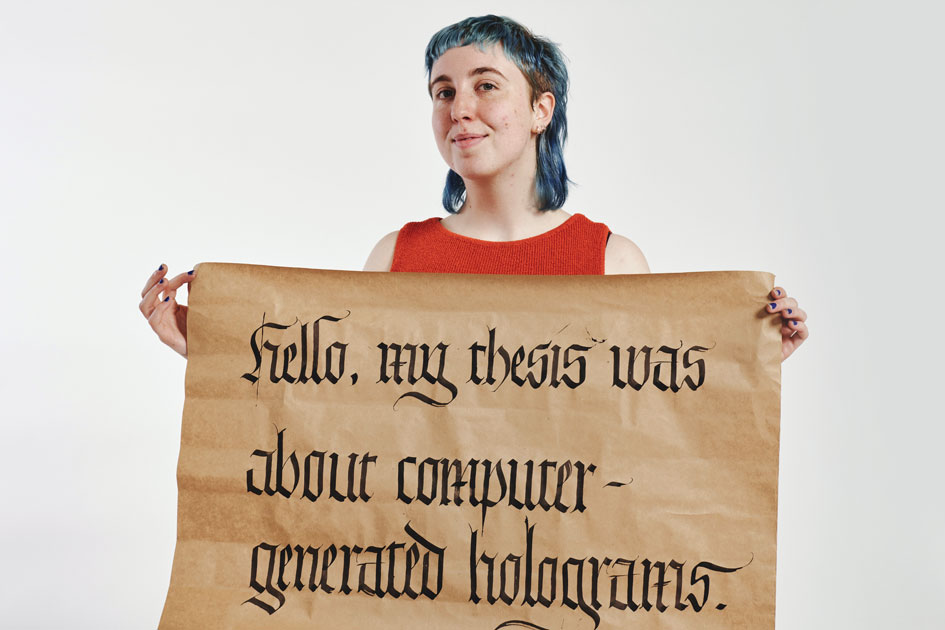Holograms, Kickboxing, and Learning To Love Letterforms
Meet physics major Oona Sullivan-Marcus ’19.
Major: Physics
Hometown: San Francisco, California
Thesis adviser: Prof. Lucas Illing [physics]
Thesis: Methods for Producing Computer-Generated Holograms Using a Spatial Light Modulator.
What it’s about: Analog holograms work by recording an interference pattern between the light scattered from an object and a reference beam, then shining the reference beam through the interference pattern to create a 3-D image. I tried to skip the recording step, and use a computer to calculate and generate the intensity pattern I would need to make a 3-D image.
What it’s really about: I made a cube out of dots in a laser beam.
In high school: I was a shy back-of-the-classroom dweller, afraid of making mistakes and seeming stupid.
Influential professors: Prof. Lucas Illing will ask you to do a lot of algebra, but it will be worth it because your understanding of physics will grow. I took three classes with him and got so much out of each one. I also greatly enjoyed Francophone Literature with Prof. Michaela Hulstyn [French] and Musical Ethnography with Prof. Morgan Luker [music], who both exposed me to ideas I never would have encountered otherwise.
Concept that blew my mind: The Big Bang should have produced equal amounts of matter and antimatter, which would have annihilated each other in the early universe. However, for some as yet unknown reason, slightly more matter was created (some estimate 1 in every 10,000,000,000 particles!), which was left over after the matter-antimatter annihilation, and this excess of matter makes up everything in the universe!
Cool stuff: I was a TA in the physics department and really got into kickboxing. Scriptorium is a biweekly calligraphy event that falls somewhere between class and club. Developing a love for letters was an unexpected but incredibly significant part of my Reed experience, and I’m grateful to have had a creative outlet and learned to see text differently. I ran the student darkroom and was an active member/leader of STEMGeMs, which seeks to support gender minorities in STEM fields.
Challenges I faced: It can be challenging to have discussions about identity as it relates to education, particularly in a department where those discussions are not directly related to the course content. I have, at times, felt that the physics department has reinforced some barriers that gender minorities face in STEM fields, which I have worked to help change.
How Reed changed me: Reed has brought irreplaceable people into my life and taught me how to participate in the process of learning. I have become more comfortable with asking questions and making mistakes because I have learned how to recover from them. Now I sit in the front row and am much less afraid of seeming stupid because it doesn’t matter how I “seem.”
Financial aid: I’m extremely grateful that my Reed education was possible because of the financial aid I received, which included the Warnaco–White Stag Scholarship.
What’s next: Moving to San Francisco to work with Dieter Dehlinge ’01 at Sense Photonics, developing LiDAR sensors.
Tags: Academics, Students, Thesis, What is a Reedie?
